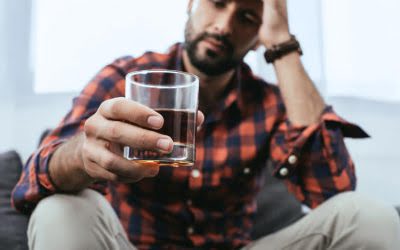Alcohol Use Disorder AUD: MedlinePlus
Content
When you start drinking too much over time, you’re at a higher risk of developing alcoholism. About one-third of people with a mental health disorder are also struggling with alcoholism. People with both a mental health disorder and alcoholism end up having what’s known as co-occurring disorders. These have serious side effects that can inflict long-term physical and psychological damage on your body. To effectively treat both of them, licensed clinicians must look at each disorder simultaneously.
- The FDA lists the following possible side effects for medicines to treat alcohol dependence and alcohol use disorder.
- We offer a safe and trustworthy facility for people struggling with substance abuse.
- While someone of any religion can become an alcoholic, individuals who are strict adherents to religions that strongly oppose alcohol are less likely to become alcoholics.
- Although there isn’t one true gene that causes alcoholism, many scientists believe that several genes are responsible for about half the risk of developing it.
Research has shown that the two genes ADH1B and ALDH2, which control alcohol metabolism, are key factors in developing alcoholism along with several others. Whether at home, at work, or in any other environment that causes stress, some people will https://www.excel-medical.com/5-tips-to-consider-when-choosing-a-sober-living-house/ have a drink to unwind and relax. A drink can help some relax and calm down at the end of a chaotic day. However, for those who develop an alcohol use disorder, this becomes a coping mechanism and turns into a maladaptive, repeating pattern.
Alcoholic Liver Disease Treatment
The proper course of treatment is to speak with a therapist and determine if medication will help you tackle life’s daily challenges. Therapy can also help you sort out your feelings and assist you in steering your life in a positive direction. To prevent alcoholism from beginning at an early age, parents should encourage alcohol prevention at this time.
A small percentage of adults who drink account for half of the 35 billion total drinks consumed by US adults each year. CDC estimates that 1 in 6 US adults binge drinks [PDF – 171 KB], with 25% doing so at least weekly, on average, and 25% consuming at least 8 drinks during a binge occasion. Binge drinking is responsible for more than 40% of the deaths and three-quarters of the costs due to excessive alcohol use. States and communities can prevent binge drinking by supporting effective policies and programs, such as those recommended by the Community Preventive Services Task Force. Excessive drinking includes binge drinking, heavy drinking, and any drinking by pregnant women or people younger than age 21. On both a genetic and environmental level, family history can contribute to alcoholism.
Prevention
Over the long- or medium-term, excessive drinking can significantly alter the levels of these brain chemicals. This causes the body to crave alcohol in order to feel good and avoid feeling bad. In the past, a person with this condition was referred to as an “alcoholic.” However, this is increasingly seen as an unhelpful and negative label. Health professionals now say that a person has an alcohol use disorder (AUD).

This then requires a person to consume more alcohol in a single sitting to produce the desired buzz. After a period of this repeated behavior, it can develop into alcoholism. A trauma-informed counselor can help an individual process their underlying trauma so that they can live a more fulfilling and emotionally healthy life. Additionally, the person receiving treatment can also address their unhealthy drinking behaviors and learn to adapt to triggering situations with more productive coping skills. For most adults, moderate alcohol use — no more than two drinks a day for men and one for women and older people — is relatively harmless.
Unfortunately, mixing prescription drugs and alcohol can lead to a variety of health problems, including:
This ultimately results in drinking more to produce the same feeling, which can eventually develop into alcoholism. All three of these therapies have demonstrated their effectiveness. Psychologists can also diagnose and treat these “co-occurring” psychological conditions. Further, a psychologist may play an important role in coordinating the services a drinker in treatment receives from various health professionals. Scientists don’t yet know exactly how Korsakoff syndrome damages the brain. Research has shown that severe thiamine deficiency disrupts several biochemicals that play key roles in carrying signals among brain cells and in storing and retrieving memories.

The prevalence of alcoholism is raised sevenfold among female family members with major affective disorders. Alcohol addiction can be overcome with help from a comprehensive, professional treatment program consisting of a variety of scientifically validated supports and interventions. Run by caring and experienced staff, these programs offer effective, specialized services aimed at combating alcohol addiction. However, a person who has been consuming unhealthy amounts of alcohol for a long time is likely to become sedated when they drink.
What happens to cancer risk after a person stops drinking alcohol?
According to the National Institute of Health (NIH), in 2015, 15.1 million American adults (6.2 percent of the population) had an alcohol use problem. If you buy through links on this page, we may earn a small commission Here’s our process. Health, safety and socioeconomic problems attributable to alcohol can be reduced when governments formulate and implement appropriate policies.
In fact, there are dozens of risk factors that play a role in the development of an alcohol addiction. These risk factors interact differently in every individual, leading to alcohol use disorders in some and not in others. What causes alcoholism can be as simple as drinking too much over time. Building up a tolerance to alcohol requires you to drink more and more to get the same feeling.
